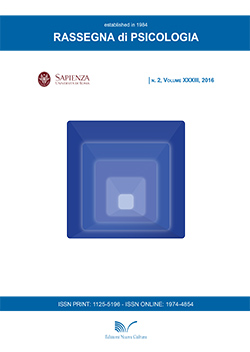Alexithymia in developmental age: theoretical considerations and construction of a new instrument for children from 4 to 8 years old
DOI:
https://doi.org/10.13133/1974-4854/16651Keywords:
alexithymia, developmental age, assessmentAbstract
To create valid instruments for measuring alexithymia is a first step to analyze the relationship, so poorly studied, between this construct and health in developmental age. The aim of this paper is to describe the process of construction and the pilot administration of a new instrument for the assessment of alexithymia in children from 4 to 8 years old, that implicated several revisions of the stimuli, of the scale and of the dimensions investigated. The instrument includes two parts, the first one for the evaluation of the basic emotions (happiness, anger sadness, fear) and the second one for the complex emotions (guilt, shame, loneliness, envy); for each part two dimensions are investigated, the ability to identify and describe the emotions and the capacity to produce fantasy stories on emotional topics, with a score on a three points scale. The stimuli presented to the children are pictures representing emotional situations; for each one children are asked to identify the emotion, to describe what happens in the images and to tell a story on the emotion investigated. The pilot administration led to a final version of the instrument, that is well accepted from children. A further phase of data collection will allow to evaluate the psychometric properties of the instrument, also taking into account gender and age differences.Downloads
Published
2016-12-20
Issue
Section
Articles
License
Copyright (c) 2016 Michela Di Trani, Alessia Renzi, Renata Tambelli, Jessica Furlan, Luigi Solano, Francesca Piperno, Carla Sogos, Giordana Ferruzzi, Ilaria Granato

This work is licensed under a Creative Commons Attribution 4.0 International License.

